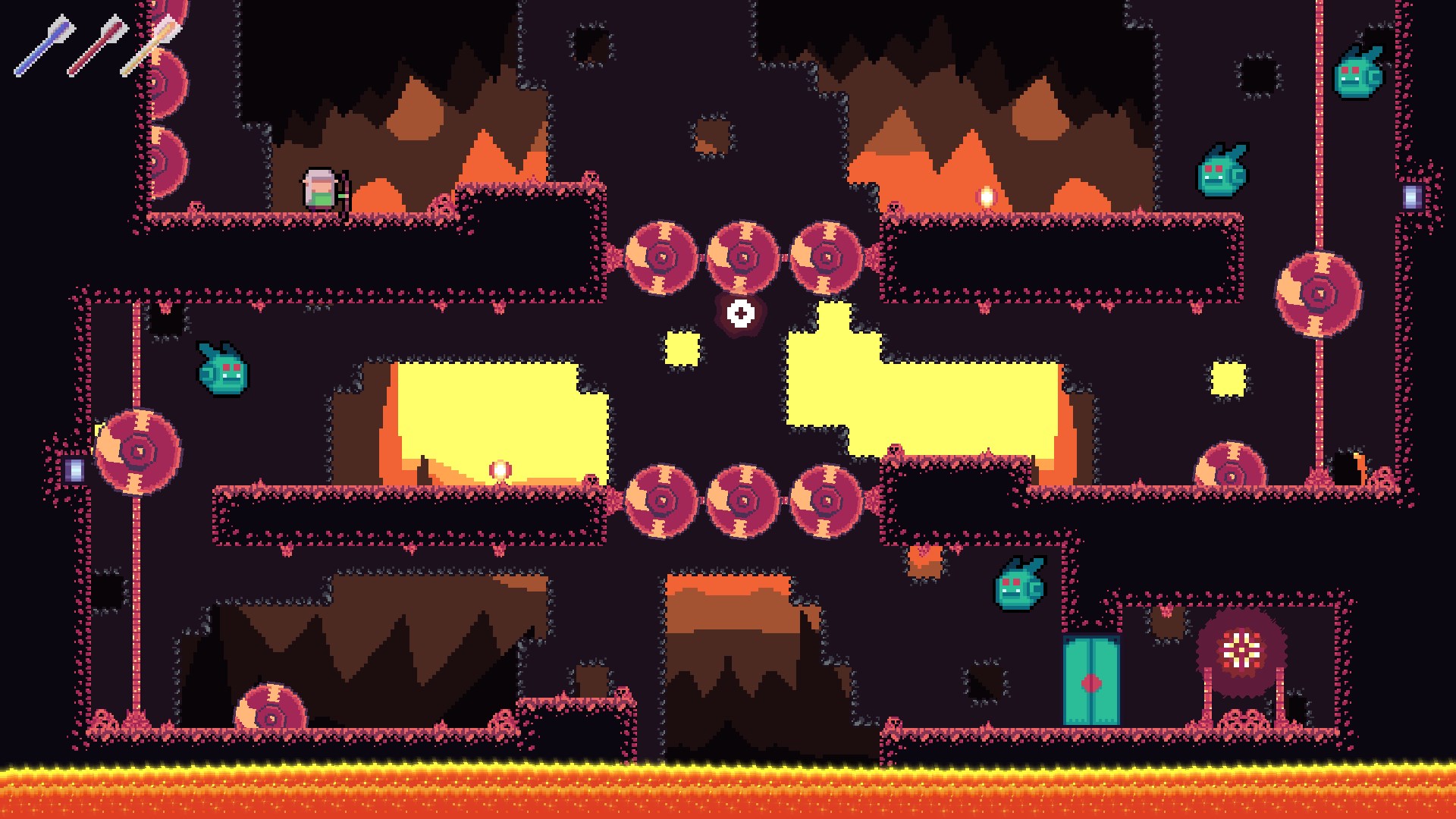
I wasn’t aware that there are people who dislike being ‘backward-facing’ on a train. It had never occurred to me that this could be a problem: that facing away from the direction of movement can feel unnatural, and even trigger nausea. It’s common apparently, and I’ve quickly started noticing that backward-facing seats were more likely to be empty. Hooray for me, I guess.
I didn’t fully understand the aversion to backward-facing seats until I played Light of Life. Because it does something backwards, and it shouldn’t bother me. But – and this is entirely subjective – what it does backwards, I dislike on a deep, guttural level.
Let’s see if it irks you too. Light of Life is a precision-platformer where the main character is an elf. She can leap from platform to platform like any other platforming antagonist. But what makes her special is that she comes with a bow, and that bow can be used to fire arrows. Nothing backward so far, right?
Well, when she fires her bow, she experiences the most ridiculous, over the top recoil. It’s like she’s firing a miniature Howitzer. That recoil sends her flying across the level, and this is her means of getting to far-flung platforms that she couldn’t have reached by a jump. It’s a dash-mechanic, except – gulp – you have to fire in the OPPOSITE direction to trigger it.
That might sound fine on paper, but think of the realities of it. Say you want to dash mid-jump, to reach the furthest of all platforms? You need to jump, twist mid-arc, and then fire an arrow to get the boost of the recoil. That’s a jump, a backwards movement, and then a fire, all while positioning yourself for the spike-surrounded platform on the other side.
It is, at best, awkward. We’d go so far to say it’s bloody horrible. At no point over the 100 levels did this action become natural, and we cursed it every single step of the way. We were the archetypical British guy, tutting and sighing all the way through. We know it’s an arrow, and we know that the dash needs to happen in a backwards fashion because that’s how physics work, but Isaac Newton wasn’t a game designer. There should be better ways of doing this. Ranty rant rant.
The thing is, we’re not entirely sure whether it will bother everyone else like it did us. It’s entirely possible that you’re reading this, wondering what the fuss is all about. But reviews are for opinions, and this one isn’t entirely baseless or subjective. So, we’re going to stick it front and centre of the review: we deeply didn’t like the core controls of Light of Life. There we go.
It’s not the only quibble we have with the controls, either. Dash-mechanics in games are so hard to get right, often because judging where you’re going to land is so difficult. Do I travel 1000 pixels with a dash, or 1200? One leads to death, the other not. Here, it’s even more finicky. You have a jet-pack like propulsion and arc to the recoil-jump, and it’s incredibly hard to work out where you’re going to land (a problem with so many spikes about). It’s possible to get better at judging the distance, but it was never wholly comfortable.
Putting all of that aside for the moment, there’s a lot to like about Light of Life. For a quirky, gimmick-led action-platformer that comes in at less than a fiver, it’s extraordinarily generous. There are one-hundred levels here, and they don’t skimp. Each one is a challenge that will nibble away at your lives, and it’s entirely possible to spend a solid five minutes on each one.
They’re varied, too. Light of Life is split into worlds, and those worlds come packaged with entirely new mechanics. The multi-coloured walls (requiring different arrows) of the first world give way to enemies that hold shields in front of them. Bubbles are introduced, which replenish your dash if you hit them, infusing you with the ability to double-dash. Bunny-eared enemies veer about and become spectacular bastards who won’t get out of the way. There’s a constant procession of new things to give a crap about, and that’s something that countless indies get wrong.
There’s a hint of replay, too. Circular gem-like things are squirreled away in the level, and getting them adds another layer of difficulty. They don’t amount to too much, but it’s good that they’re there – particularly if you fell in love with the backward-firing stuff, you weirdo.
Achievements are so free-flowing that it undermines the rest of the game, as often happens with budget titles. Once you get to the end of the first world, the achievements are exhausted and you will have 1000 Gamerscore. That’s music to the ears of some people, but we suspect it will mean few people reach that magical level 100. When there’s so much on offer – particular in terms of difficulty – that’s kind of a shame.
Ultimately, we liked the levels in Light of Life, but hated the controls. It’s not that the controls are inaccurate or slippy; the problem is in the concept. We found that using a bow and arrow to dash backwards through a level is just as unnatural and confusion-inducing as sitting backwards on a train.
There’s every chance that it won’t bother you, but – in our case – there was no ‘light’ or ‘life’ in our playthrough of Light of Life. We felt pretty gloomy the whole way through, and there was a whole lot of death.


